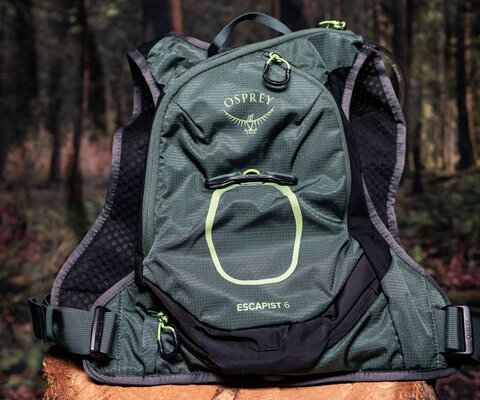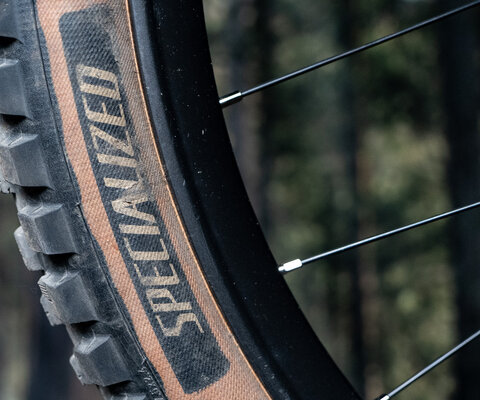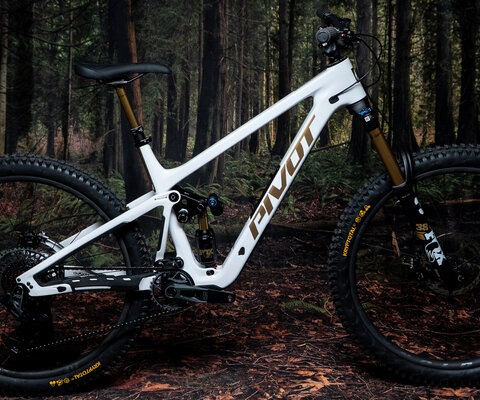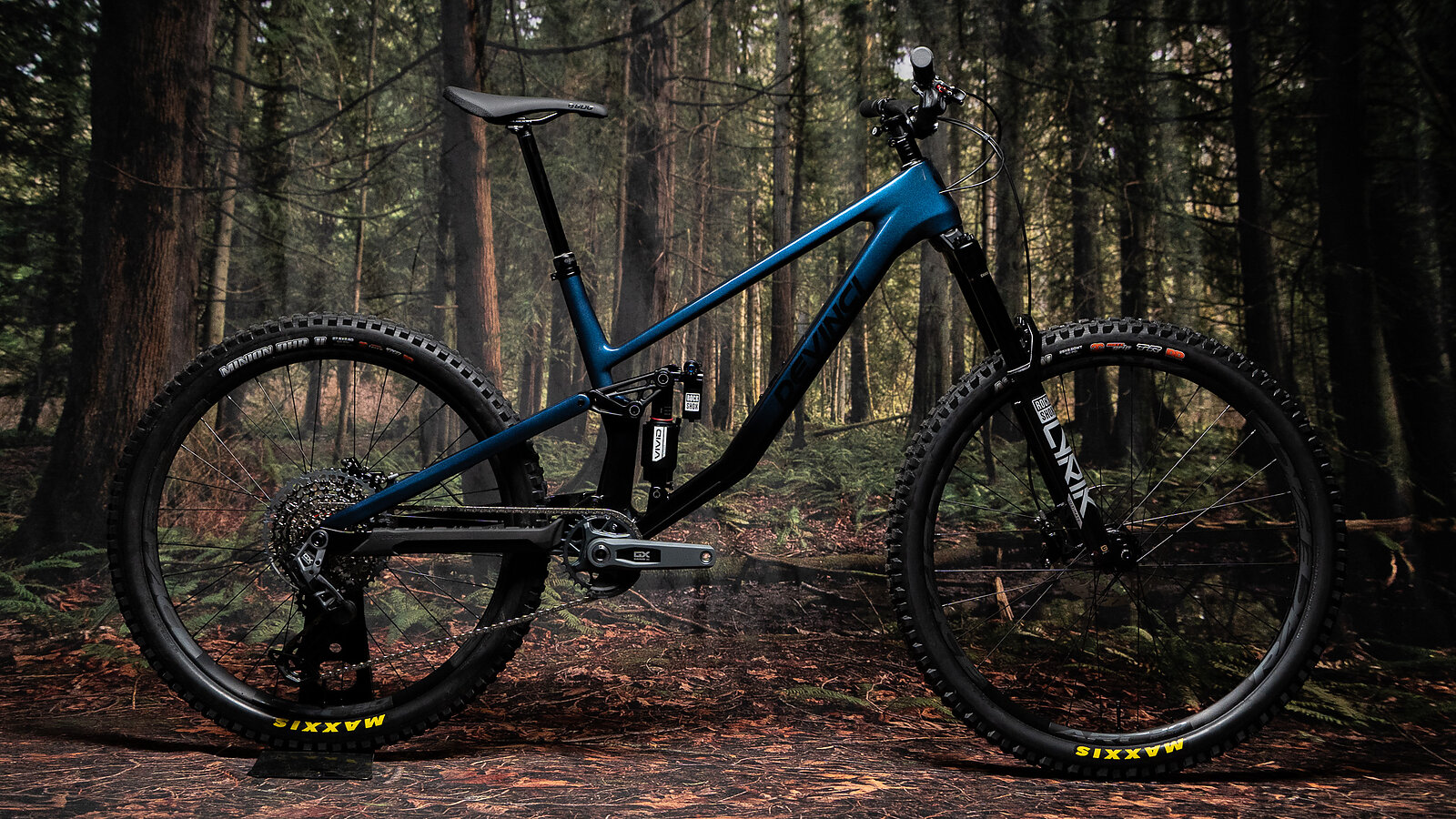
Devinci Troy Carbon Bike Review
Words and Photos by Cy Whitling
The same winning formula, but lighter.
‘Tis the season for slightly updated bikes! This week’s edition is the new Devinci Troy, now available with a full carbon frame. We reviewed the alloy version of this Troy last year when it launched, and Spencer found it to be a fun, versatile ride.
The new carbon-framed version is very similar: it shaves about two pounds of total weight, but maintains the same easy-to-love ride quality of the aluminum bike.
Devinci Troy Carbon Details
- Travel: 150 mm (rear) 160 mm (front)
- Wheel Size: Mixed 29”/27.5” or 29”
- Size Tested: Large
- Build Tested: GX AXS
- Head Tube Angle: 64°
- Measured Weight: 32.9 lbs (14.92 kg)
- MSRP: $6,499
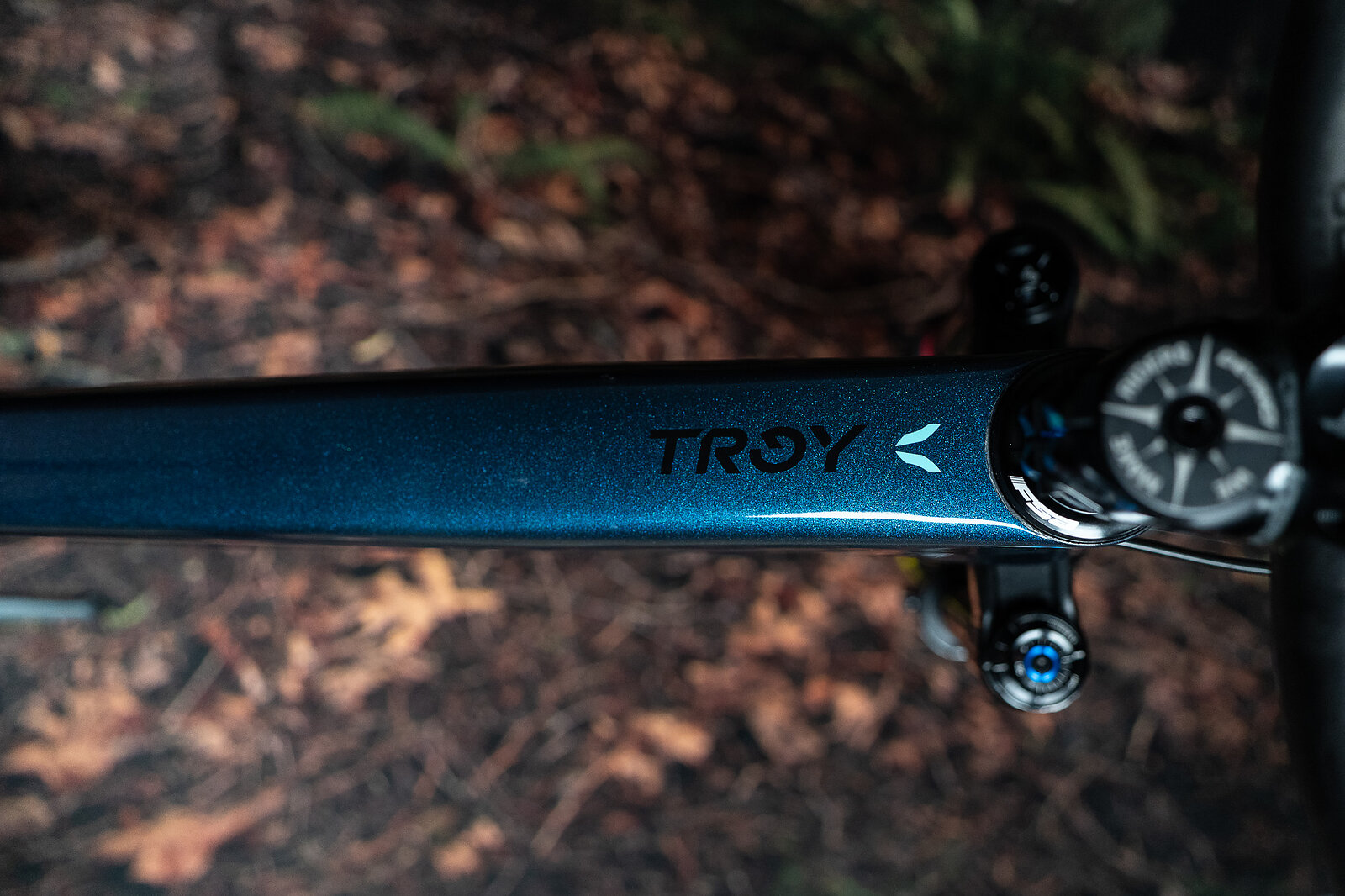
Devinci Troy Carbon Updates
When Devinci carbonized the Troy, it kept things pretty simple: the only numbers that changed were the Troy’s chainstay length, which drops from 442 millimeters on the aluminum version to 440 on the carbon and the standover height which goes from 737 millimeters to on the alloy bike to 708 millimeters on the carbon version. Otherwise you’ve got the same geometry, the same internal storage, and the same flip chip to account for rear wheel sizes.
The industry norm seems to be to charge about $1,000 more for a carbon frame than the aluminum version of the same bike. In contrast, the carbon Troy costs just $350 more than the aluminum bike with the same build. That might just be the best dollar-to-pound of weight saved ratio around. It’s rare that you can get two pounds for well under $500. But, on the flipside, Devinci’s alloy frames are built in Canada—another worthwhile rarity.

Devinci Troy Carbon Frame Details
Plenty of ugly bikes ride just fine, but the Troy is an absolute looker. These lines are so clean, and the sparkle-fade blue to black paint job might just be my favorite that’s come through the office in recent memory. We are living in a golden age of bike performance where there’s a huge swath of trail bikes that all perform very similarly to one another. So if a brand can stand out on the aesthetic front, it’s worth doing.
Beyond its looks, the Troy Carbon has a well-sorted frame. The flip chip is easy to access and swap, the hardware is all etched with torque values, and the in-frame storage works nicely. It’s not the most capacitous around, but it does have one of the better included bags, and it has plenty of space for my ride essentials (pump, derailleur battery, tire plugs, spare contacts). Finally, both alloy and carbon versions of the new Troy use Boost 148-millimeter rear spacing. Is SuperBoost dying? I’ll refrain from putting on my dancing shoes, but I am getting them out and shining them up so they’re ready for a jig once that particular grave (hopefully) is filled. Otherwise, the standards are unsurprising, with a 31.6 mm seat post and threaded BB.
There are two interesting things to note about the Troy: First, all the current builds come with 27.5-inch rear wheels. I’m a big mullet fan, but Devinci does seem to be bucking the trend by defaulting a bike in this travel range to mixed wheels. I’d love to see the data that influenced this decision. If you do want to run a 29-inch wheel out back, you’ll need to supply your own.
Second, Devinci explicitly states that the frame is not compatible with 170-millimeter forks, and lists a max axle-to-crown number. So if you want to run your Troy with a longer fork, you’re giving up your sweet lifetime warranty to do so. Given how clean the new Troy is, I’m excited to see what an updated Spartan brings to the table for longer-travel aficionados.


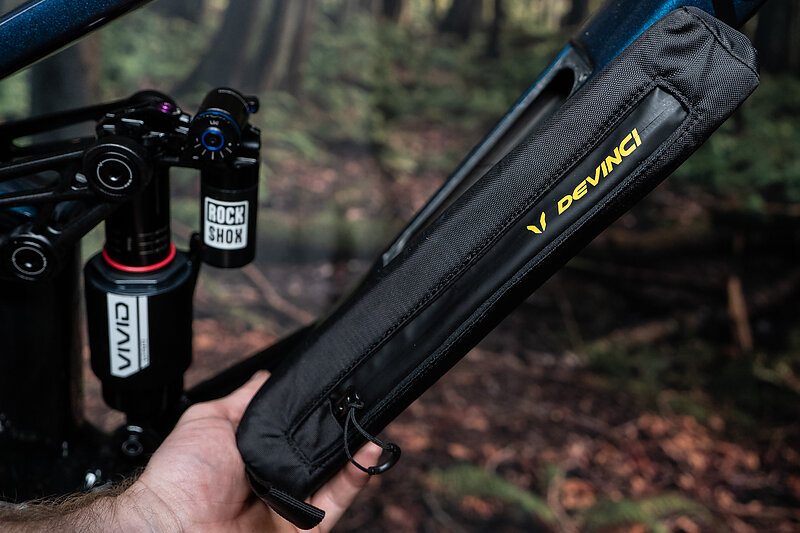
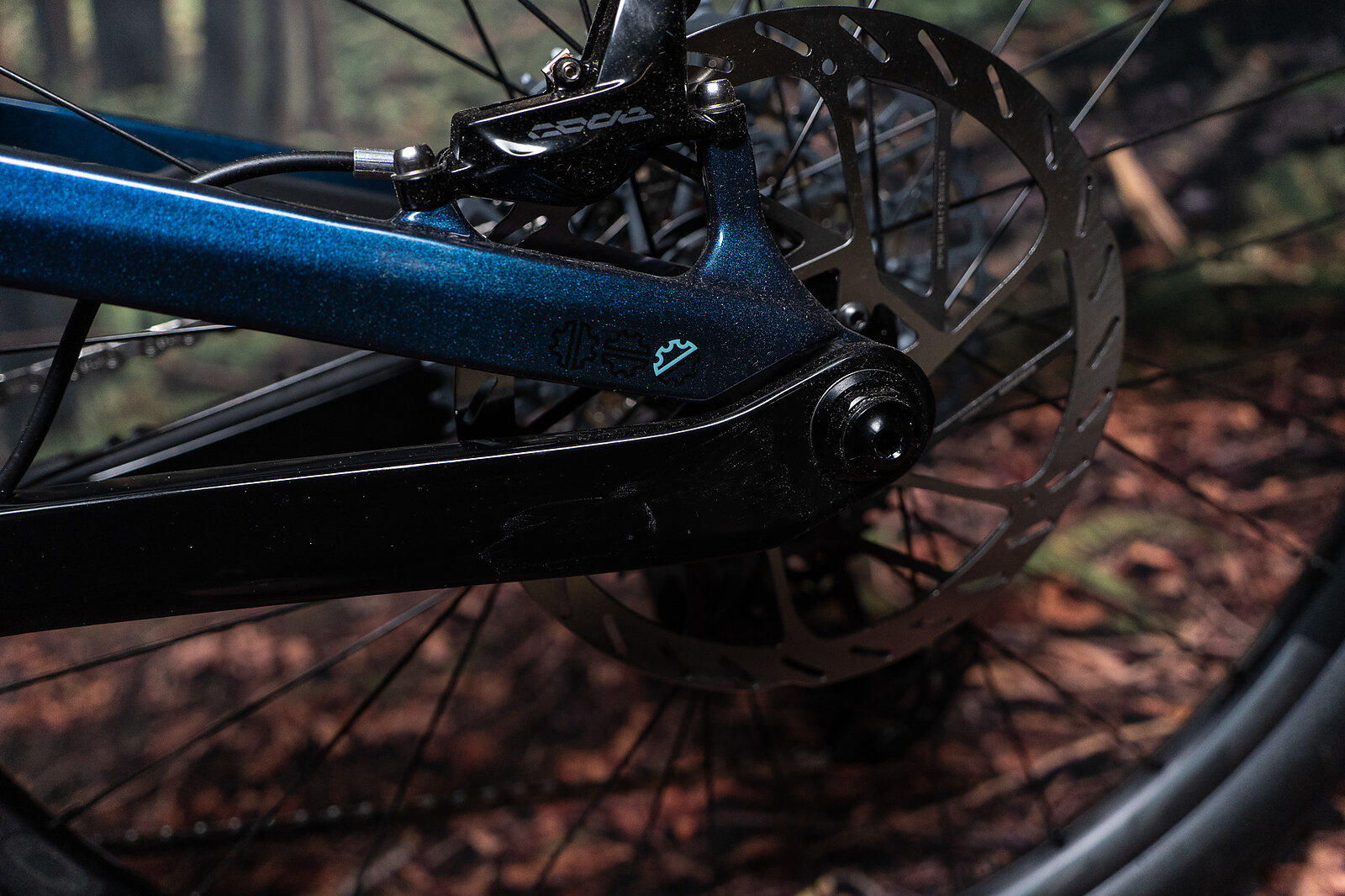
Devinci Troy Carbon Build
I’ve been riding the more expensive of the two Troy builds, and it’s predictably good. So here’s a quick rundown of the good, the excellent, and the interesting:
The good: SRAM’s GX Transmission still performs very well. The same goes for the RockShox Lyrik Ultimate and Vivid Ultimate. They’re easy to set up and easy to love. The same goes for the SDG Tellis V2 dropper. It goes up and down whenever it needs to.
On the excellent front: It’s great to see Maxxis DoubleDown tires (MaxxGrip front, MaxxTerra rear) at this total bike weight range. Devinci could have chased a great-on-paper weight by going with lighter tires, but instead you get solid tires out of the box. I’m also a fan of the 40-millimeter rise RaceFace bar and 165 mm cranks. The Troy has a somewhat shorter stack height than some of its contemporaries, but the higher rise bar helps remedy that.
Finally, the interesting: Devinci didn’t spec the Troy with SRAM’s Maven brakes. And they didn’t under-spec it with Motives. Instead they threw it back with Codes. As it turns out, Codes are still a solid brake. They take a little longer to bed in and come to life than Mavens, and don’t deliver the same level of power, but the Troy was a good reminder that Codes have been a totally adequate brake for ages. It will be interesting to see if Devinci specs later builds of the Troy with the new Maven Base brakes.
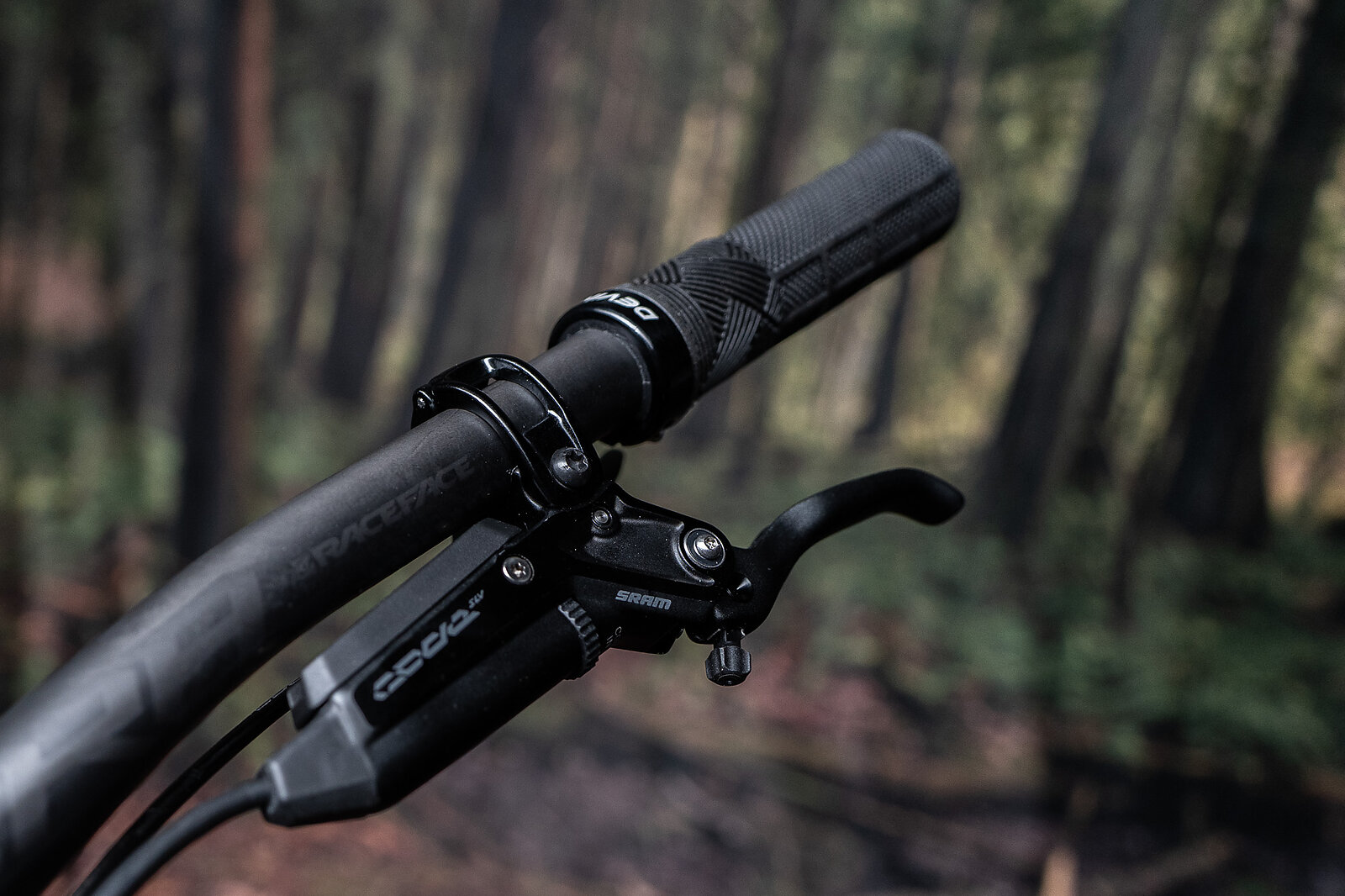
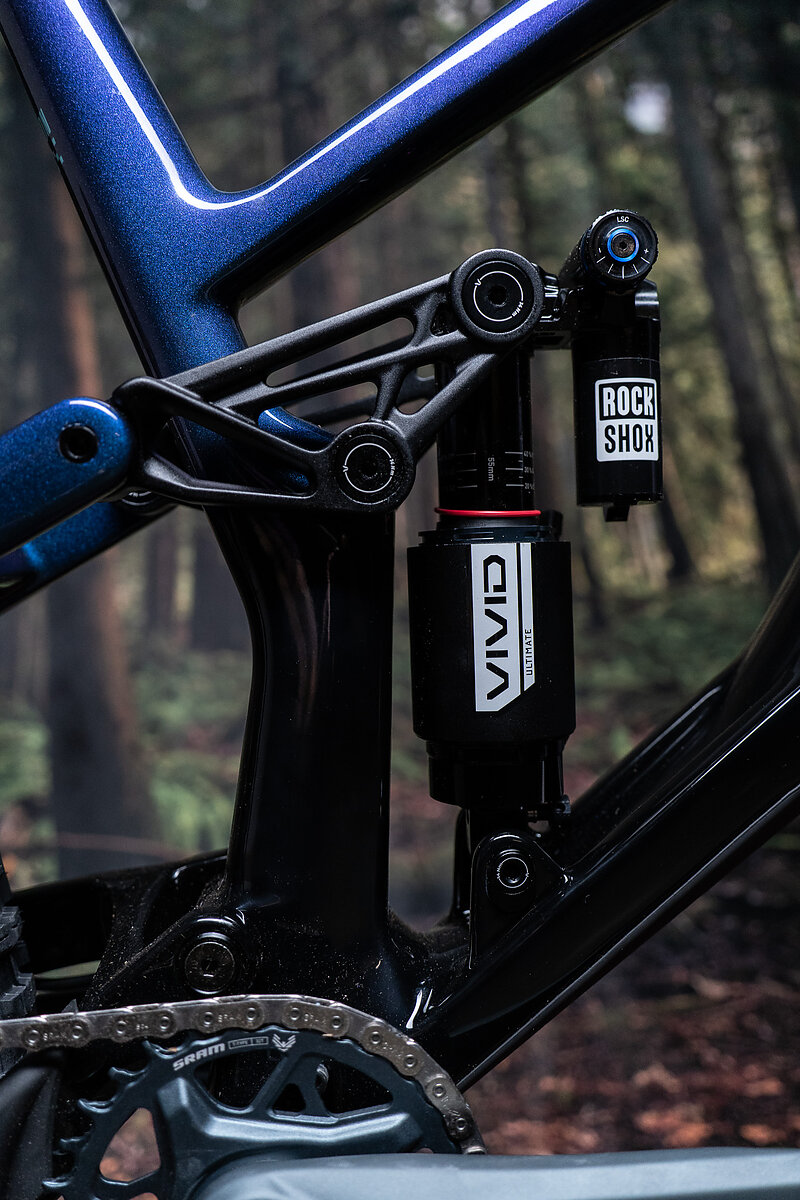

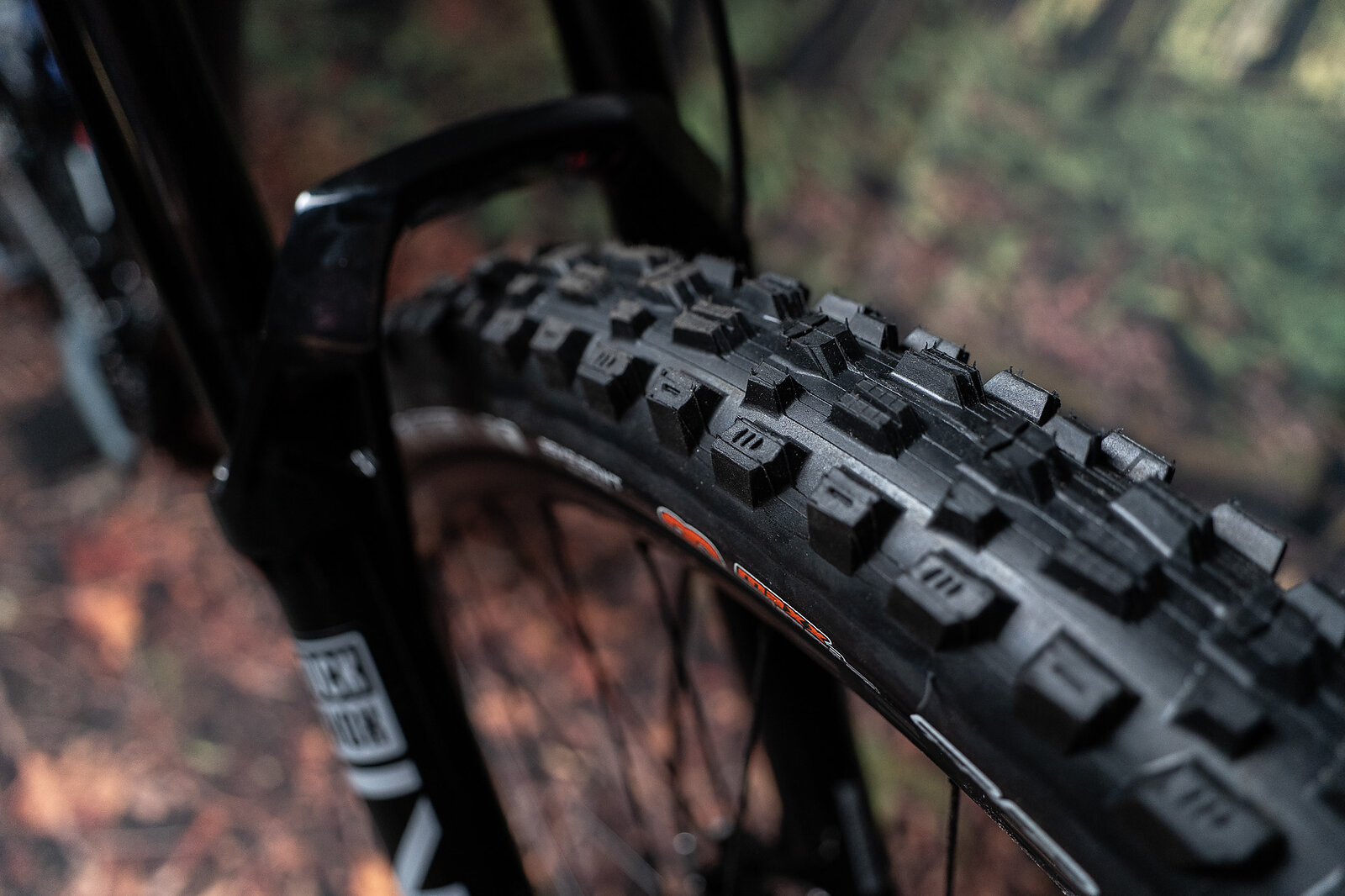
Riding the Devinci Troy Carbon
In his review Spencer said that the Troy Alloy was “a durable, versatile machine that can handle everything from long pedals to double-black descents without compromising too much on either extreme.” And I could say the same thing about the carbon version with the addendum that it’s also two pounds lighter. This is a versatile bike that does all the things.
That said, I would recommend using the RockShox setup guide for the Troy. I found myself running higher pressures in the Vivid than usual, and settled on about 255 PSI for my 200 pound weight. At lower pressures I found that the Troy was a little over-eager to use its initial travel and rode fairly low, even though it wasn’t bottoming out harshly. With more air in the rear shock the Troy was snappier, quicker-feeling, and more responsive.
Going uphill, the 76.8° seat tube angle is right at the borderline for me to complain about its slackness on steep climbs. I’m running my saddle all the way forward on the rails to compensate, and even if Devinci didn’t ban 170-millimeter forks, I’d still shy away from lifting that front end up any more and slacking out that seat tube further. The Troy is a fairly active climber; it delivers a lot of traction, which is great on techy climbs and had me reaching for the lockout on gravel ascents.

Headed down, the Troy delivers a nice balance of traction and support. It’s a very “by the book” ride feel, which corresponds nicely with its fairly modern and conventional geometry. I found it easy to pump off of lips and stuff into corners. There are more “plowable” bikes in this class, and you could throw a 29-inch rear wheel and coil shock on the Troy to make it more aggressive, but in its stock form it’s nicely set up to handle everything from big backcountry rides to shorter feature-rich trails.
My personal bike is a Specialized Stumpjumper 15, and I’ve spent the last year fiddling with both its geometry and suspension, trying a wide range of setups. It’s no coincidence that after that year of experimentation, I’ve landed on a favorite configuration that’s very similar to the stock Troy both in terms of geometry, and how the suspension behaves. The recipe is popular because it works.
Devinci took a relatively simple formula for a good trail bike, and executed it excellently in aluminum. Then they made the same bike out of carbon. Simple done right always pays off.
For Now
The Devinci Troy is not the meanest, or the snappiest, or the most aggressive, or the most efficient bike in this class. It’s short on buzz words and proprietary features. Instead it’s a thoroughly modern trail bike. It does trail bike things very well, and it looks good doing them. What more can you ask for?
Learn more: Devinci Bikes
